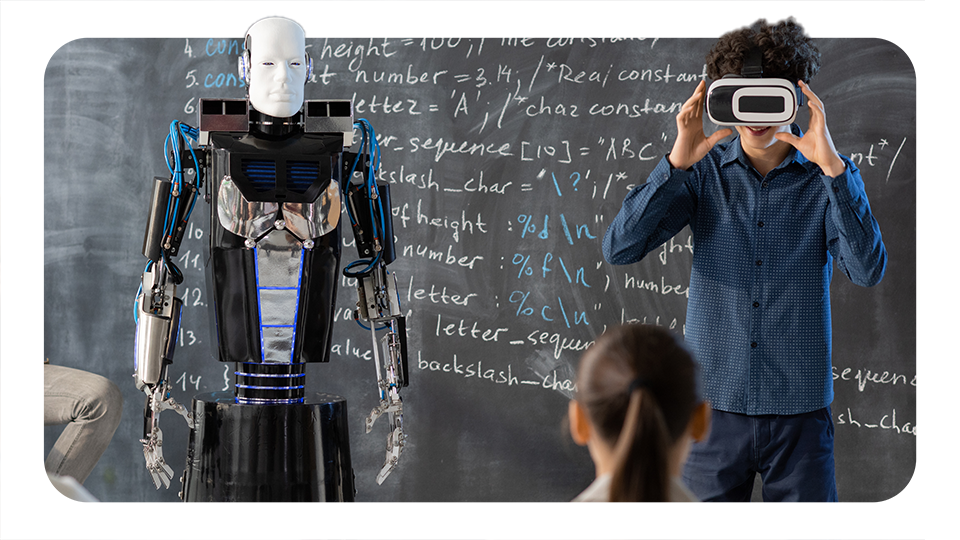Multiple-choice questions (MCQs) are popular for their efficiency and ease of grading, but they often fall short in measuring deeper understanding and critical thinking skills. To address this, educators have turned to alternative assessment strategies that offer a more comprehensive view of student learning. These methods empower students to demonstrate their understanding in diverse ways and provide valuable insights for instruction.
Let's delve into some effective alternative assessment methods that can enrich your teaching practice and empower your students to demonstrate their understanding in diverse ways:
Understanding Alternative Assessment
Alternative assessment is any method of evaluating students' knowledge, skills, and abilities that diverges from traditional, standardized tests. These methods prioritize authentic tasks and real-world applications, providing a more comprehensive view of students' capabilities. Unlike multiple-choice tests, alternative assessment methods focus on higher-order thinking skills, problem-solving abilities, and creativity.
Alternative Assessment Strategies
Open-Ended Formats:
Essay Types: Encourages Critical Analysis
- Essay questions prompt students to delve deep into a topic, articulate their thoughts, and construct coherent arguments.
- By requiring written responses, educators can assess students' ability to synthesize information, think critically, and communicate effectively.
Complex Scenario-Based Questions: Applies Knowledge in Context
- Scenario-based questions present students with real-world situations or problems and ask them to analyze, evaluate, and propose solutions.
- This format encourages students to apply their knowledge and skills to practical scenarios, fostering deeper understanding and problem-solving abilities.
Closed-Ended Formats:
Multiple-Choice and Multiple Answers: Assesses Knowledge and Recall
- Multiple-choice questions provide a selection of options, requiring students to identify the correct answer among several choices.
- Multiple answers expand on this format by allowing for more than one correct response, testing students' understanding of nuanced concepts.
Drag & Drop, Fill in the Blanks, True or False: Enhances Interactivity
- These interactive formats engage students in active participation by requiring them to manipulate elements or provide direct responses.
- Drag & drop and fill-in-the-blank questions can be used to assess spatial reasoning and application of concepts, while true or false questions test factual understanding.
Multimedia Questions:
Audio and Video Questions: Expands Assessment Possibilities
- Audio questions involve playing a recording or sound clip, followed by related questions that assess listening comprehension or interpretation skills.
- Video questions present students with a video clip and ask them to analyze content, make inferences, or respond to prompts, integrating visual learning into assessments.
Essay Types and Multiple True/False Questions:
Essay Questions: Fosters In-Depth Analysis
- Essay questions offer students the opportunity to demonstrate their understanding through extended written responses.
- This format allows for in-depth analysis, synthesis of ideas, and critical evaluation of concepts, providing a more holistic view of students' comprehension.
Multiple True/False Questions: Tests Nuanced Understanding
Multiple true/false questions present statements that may be partially true, requiring students to discern nuances and evaluate each statement independently.
Benefits of Utilizing Alternative Assessments
- These methods encourage students to engage with the material more meaningfully, promoting a deeper understanding of concepts.
- Alternative assessments cultivate critical thinking, analysis, synthesis, and communication skills through various online activities.
- They allow for diverse learning styles and provide educators with richer data to personalize instruction and feedback.
- Several methods, like online discussions and collaborative projects, foster collaboration and enhance communication skills.

Assessment Platform
Talk to SalesBrainCert Assessment Options
BrainCert offers a comprehensive suite of assessment options designed to cater to diverse learning styles and objectives.
- Diverse Question Formats:
BrainCert empowers educators with a wide range of question formats to create engaging and effective assessments. From traditional multiple-choice and true/false questions to more interactive formats like drag & drop and fill in the blanks, BrainCert supports various question types to suit different subject areas and assessment goals. - Multimedia Integration:
Elevating assessments to the next level, BrainCert allows educators to incorporate multimedia elements such as audio and video questions. This enables a more immersive learning experience and provides opportunities for students to demonstrate comprehension through auditory and visual means. - Essay and Scenario-Based Questions:
For assessments requiring critical thinking and analysis, BrainCert offers support for essay and scenario-based questions. Educators can craft prompts that encourage students to apply their knowledge in real-world contexts, fostering deeper understanding and problem-solving skills. - Adaptive Assessment Features:
BrainCert's assessment platform includes adaptive features that tailor the assessment experience to individual learners. Through intelligent algorithms and analytics, the platform dynamically adjusts the difficulty of questions based on students' responses, ensuring a personalized and effective assessment experience. - Advanced Analytics and Reporting:
Beyond just administering assessments, BrainCert provides robust analytics and reporting tools to track student performance and progress. Educators can gain valuable insights into areas of strength and weakness, identify trends, and make data-driven decisions to optimize teaching and learning strategies.
To Conclude
By utilizing BrainCert and exploring various assessment methods, educators can create a more engaging and enriching learning experience for students. This not only helps with the development of critical thinking skills but also encourages adaptability and innovation in the digital age. It empowers students to take ownership of their learning journey, becoming confident and self-directed learners prepared for the challenges.






